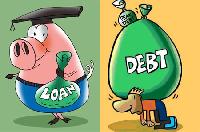
The leading financial sector problem at present in India is NPAs of the Public Sector Banks. So far the RBI has taken several steps to tackle NPAs and one of them is the Strategic Debt Restructuring (SDR) Scheme. Under SDR, banks who have given loans to a corporate borrower gets the right to convert the full or part of their loans into equity shares in the loan taken company.
The SDR scheme which was introduced by the RBI in June 2015 thus helps banks recover their loans by taking control of the distressed listed companies.
The SDR an initiative can be taken by the group of banks or JLF that have given loans to the particular defaulted entity. The Joint Lender Forum (JLF) is a committee comprised of the entire bankers who have given loans to a potentially stressed or stressed borrower. At present, banks can form a JLF if the account by a borrower is classified as Special Mention Account 2 (not paid any money back during the last 60 days).
The RBI in its “Framework for Revitalizing Distressed Assets in the Economy – Guidelines on Joint Lenders’ Forum (JLF) and Corrective Action Plan (CAP)” has suggested change of management as a part of restructuring of stressed assets. Change of management means share transfer from the promoter to the banks.
The SDR gives banks more power in the management of the company who has taken loan and has defaulted. The RBI has modified the scheme later to give a correct shape.
Who should initiate it?
The Joint Lenders Forum/Corporate Restructuring Cell can initiate the SDR scheme
The JLF/Corporate Debt Restructuring Cell (CDR) may consider the following options when a loan is restructured:
- Possibility of transferring equity of the company by promoters to the lenders
- Promoters infusing more equity into their companies;
- Transfer of the promoters’ holdings to a security trustee or an escrow arrangement till turnaround of company.
Major Features of SDR Scheme
Following are the major features of the SDR Scheme.
- At the time of initial restructuring, the JLF must incorporate an option to convert the entire loan (including unpaid interest), or part thereof, into shares in the company in the event the borrower is not able to achieve the ‘critical conditions’ as stipulated in the restructuring package.
- Provisions of the SDR would also be applicable to the accounts if necessary clauses are included in the agreement between the banks and borrower;
- The decision on invoking the SDR by converting the whole or part of the loan into equity shares should be taken by the JLF. The decision should be documented and approved by the majority of the JLF members (minimum of 75% of creditors by value and 60% of creditors by number).
- In order to achieve the change in ownership, the lenders under the JLF should collectively become the majority shareholder by conversion of their dues from the borrower into equity
- After the conversion, all lenders under the JLF must collectively hold 51% or more of the equity shares issued by the company;
The basic purpose of SDR is to ensure more stake of promoters in reviving stressed accounts and providing banks with enhanced capabilities to initiate change of ownership, where necessary, in accounts which fail to achieve the agreed critical conditions and viability milestones. SDR cannot be used for any other reason.
*********









